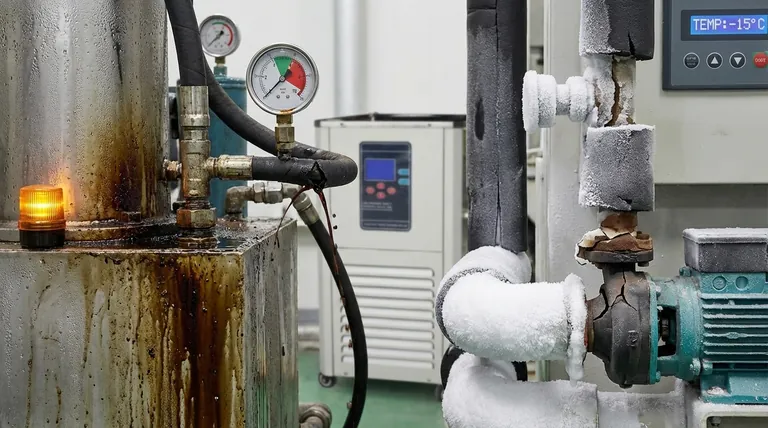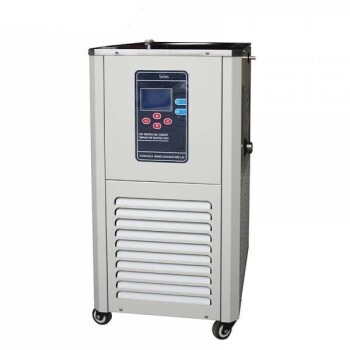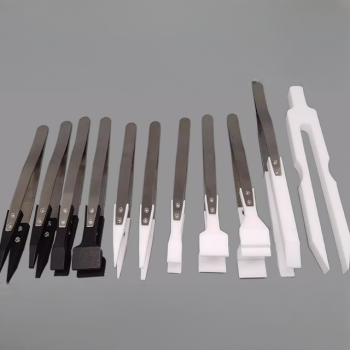Yes, absolutely. Both excessively hot and cold operating temperatures will cause severe, progressive damage to a hydraulic system over time. Temperature is not just an environmental factor; it is a critical operating parameter that directly governs the health of the hydraulic fluid and the longevity of every component in the system.
The core takeaway is that a hydraulic system's temperature dictates the fluid's viscosity and chemical stability. Operating outside the optimal range initiates a cascade of failures, from accelerated wear and internal leakage to seal degradation and catastrophic component failure.

The Dangers of Running Too Hot
Excessive heat is the most common temperature-related problem in hydraulic systems and is a primary driver of premature failure. Every 18°F (10°C) increase in temperature above 140°F (60°C) can cut the life of the hydraulic oil in half.
Fluid Viscosity Breakdown
When hydraulic fluid gets too hot, its viscosity—its thickness and resistance to flow—drops significantly. This thinning of the oil has immediate, negative consequences.
The fluid film that lubricates and protects critical components like pumps, motors, and valves becomes too thin to prevent metal-on-metal contact, leading to accelerated wear.
This low viscosity also increases internal leakage within components. This means more fluid bypasses working surfaces, reducing system efficiency, slowing actuator speeds, and generating even more heat.
Accelerated Oxidation and Degradation
Heat acts as a powerful catalyst for oxidation, the chemical reaction between the fluid and oxygen. This process permanently degrades the oil.
As the fluid oxidizes, it forms sludge, varnish, and corrosive acids. Varnish can cause valves to stick and clog small orifices, while sludge can block filters and suction lines. The resulting acids attack metal surfaces and elastomeric seals.
Damage to Seals and Hoses
The elastomeric materials used for seals and hoses are highly susceptible to heat damage. Prolonged exposure to high temperatures causes them to become hard and brittle.
This loss of flexibility prevents seals from doing their job, resulting in both internal and external leaks. Brittle hoses are far more likely to crack and fail catastrophically under pressure.
The Hidden Risks of Running Too Cold
While less common, operating a hydraulic system in extremely cold conditions without proper precautions presents its own set of severe risks, especially during start-up.
Increased Fluid Viscosity
Cold temperatures cause hydraulic fluid to become extremely thick and viscous. This makes it difficult for the pump to draw the fluid from the reservoir.
The high viscosity places immense strain on the system's prime mover (the electric motor or engine) and can lead to sluggish, erratic actuator movement until the fluid warms up.
Cavitation and Pump Damage
The most severe risk of a cold start is pump cavitation. This occurs when the pump cannot pull the thick fluid in fast enough, creating low-pressure voids or vapor bubbles.
As these bubbles travel to the high-pressure side of the pump, they implode violently. This implosion unleashes destructive micro-jets of fluid that erode and pit the precision metal surfaces inside the pump, leading to rapid failure.
Embrittlement of Components
Just as heat makes seals brittle over time, extreme cold can make them temporarily lose their pliability. A cold, stiff seal is less effective and more susceptible to damage and leakage, particularly when subjected to the pressure shocks of system start-up.
Understanding the Optimal Operating Range
The goal is not simply to avoid extremes but to maintain a stable temperature within the system's ideal operational window.
Defining the "Goldilocks Zone"
For most standard hydraulic systems, the optimal fluid temperature range is between 120°F and 140°F (50°C to 60°C).
In this range, the fluid's viscosity is ideal for maximizing efficiency, ensuring proper lubrication, and dissipating heat effectively without accelerating fluid degradation.
The Cost of Inaction
Ignoring system temperature is a direct path to higher operating costs. Overheating leads to wasted energy through internal leakage, while cold operation increases energy consumption due to high fluid viscosity.
Both extremes result in more frequent fluid changes, premature component failure, and costly, unplanned downtime.
How to Maintain Optimal System Temperature
Proactive temperature management is one of the most effective strategies for maximizing the reliability and lifespan of your hydraulic equipment.
- If your primary focus is preventing overheating: Regularly clean and inspect heat exchangers (coolers), ensure the reservoir fluid level is correct, and verify that system relief valve settings are not causing excessive heat generation.
- If your primary focus is managing cold start-ups: Utilize multi-viscosity hydraulic fluids designed for a wider temperature range, implement a proper warm-up procedure before placing the system under load, or install thermostatically controlled tank heaters.
- If your primary focus is long-term reliability: Institute a program of regular fluid analysis to monitor for signs of oxidation, viscosity changes, and contamination, allowing you to address temperature-related issues before they cause catastrophic damage.
Ultimately, treating your system's temperature as a vital sign is fundamental to ensuring its long-term health and performance.
Summary Table:
| Temperature Issue | Primary Risks | Key Consequences |
|---|---|---|
| Too Hot (>140°F / 60°C) | Fluid oxidation, viscosity breakdown | Accelerated wear, seal degradation, sludge formation |
| Too Cold | High viscosity, cavitation | Pump damage, cold start strain, seal embrittlement |
| Optimal Range (120°F–140°F / 50°C–60°C) | Stable viscosity, efficient lubrication | Maximized component life, reduced downtime |
Protect your hydraulic systems from temperature-related failures with KINTEK.
As a trusted supplier of laboratory equipment and consumables, we understand the critical role that temperature control plays in system longevity. Whether you need reliable cooling systems, high-quality hydraulic fluids, or diagnostic tools for fluid analysis, KINTEK provides solutions tailored to your lab's unique needs.
Don’t let extreme temperatures compromise your equipment’s performance or lead to costly downtime. Contact our experts today to discuss how we can help you maintain optimal operating conditions and extend the life of your hydraulic systems.
Visual Guide

Related Products
- 5L Chilling Circulator Cooling Water Bath Circulator for Low Temperature Constant Temperature Reaction Bath
- Manual Lab Heat Press
- Laboratory Manual Hydraulic Pellet Press for Lab Use
- Manual Heated Hydraulic Press Machine with Heated Plates for Laboratory Hot Press
- Shaking Incubators for Diverse Laboratory Applications
People Also Ask
- What is the unit of measurement for melting point? Celsius, Kelvin, or Fahrenheit?
- What is the temperature of a hydraulic system? Maintain Optimal Performance & Prevent Damage
- What is the operating temperature of a standard hydraulic system? Achieve Peak Efficiency and Longevity
- What type of condensers are used in Ultra Freezers? Air-Cooled Systems for Ultimate Reliability
- What are the key factors to consider when selecting a circulating pump? Avoid Costly Mistakes and Maximize Efficiency



















